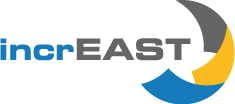

| published in September 2015
'Innovation Strategy in R&D projects: a step by step guide' is a practical, concise, and free-of charge downloadable guide, which was prepared by 19 contributors coming from all across the European Union. It explains why and when an innovation strategy is required in research & development projects. 'ARIaT – Horizon 2020 Annotated Research and Innovation Actions Template': The annotated template aims to assist applicants to the Research and Innovation Actions (RIA) and Innovation Actions (IA) of Horizon 2020 to better understand the requirements of the templates and better write innovation-related issues in the H2020 proposals.
The practical, concise, and free-of charge downloadable “step by step guide” was prepared by 19 contributors coming from all across the European Union. It responds to the demand of hundreds researchers and innovators in Europe who took part in the trainings focusing on different aspects of the exploitation of the R&D results. The guide explains why and when an innovation strategy is required in research & development projects, and how it should be developed and implemented.
The guide is relevant to R&D practitioners concerned with increasing the market and commercial impacts of their research, working either on collaborative R&D projects or in company internal projects. Concrete, real life examples are provided to illustrate each topic, along with frequently asked questions, important points to remember and other learning tools and useful links. These examples were developed throughout the Health-2-Market project and are therefore related to health sciences; however, methodologies to prepare and to implement innovation strategies are universal. The guide is thus designed to be relevant to everyone wishing to bring research results to market whatever the field of research, with or without previous experience in doing so.
The first chapter describes key aspects of an innovation strategy: what for, for whom and by whom. Chapter 2 is intended to provide a useful overview and practical guide to develop an innovation strategy. Chapter 3 constitutes the central part of this guide providing a base of information to understand different commercialisation routes (Chapter 3.1) and to assist in getting started with an IP protection process (Chapter 3.2), a business plan (Chapter 3.3), a marketing strategy (Chapter 3.4) and a financing strategy (Chapter 3.5). It also gives some insights about European legislation, standardisation and certification issues (Chapter 3.6). Chapter 4 gives insights on how to follow-up and evaluate the innovation strategy as it is a living document that needs to be adaptive and to evolve over time. At the end of the guide, there are some useful links to go further.
While this guide can help get a start, the topics can get quite technical and we are unable to cover such detail and broad subjects thoroughly enough. Professional help would most probably be needed and the readers are encouraged to seek it.
Downloads:
Innovation dimension in Horizon 2020 proposals: set of good practices to understand and write innovation related issues both in Research and Innovation Actions (RIA) and Innovation Actions (IA).
The annotated template aims to assist applicants to the Research and Innovation Actions (RIA) and Innovation Actions (IA) of Horizon 2020 Framework Programme for 2014-2020 to better understand the requirements of the templates and better write innovation-related issues in the H2020 proposals. It highlights and emphasise the innovation elements that an excellent project application should contain.
A successful project proposal needs to speak out convincingly to a broad readership encompassing experts from a wide range of fields. While the scientific/technical soundness of a proposal is central to its ultimate success, it is also essential that the challenges to be addressed, opportunities to be exploited, and results to be achieved are clear and understandable to all readers, specifically to Horizon 2020 evaluators. Moreover, the linkage between results to be achieved and their relevance for European policy orientations should be clear, as well as the economic opportunities they will provide for citizens. The ARIaT Template has been structured to guide project formulators in presenting information required especially by the criteria of Excellence (criterion 1) and Impact (criterion 2). The Appendices include an example of a business plan executive summary and an example of work packages addressing dissemination and exploitation of results, preparation of market authorisation and market access (related to health topic).
The document is edited by APRE (Italy), Horizon 2020 National Contact Point for Health – Societal Challenge 1, and co-authored by specialists from engage AG (Germany), inno TSD (France), IE Business School (Spain) and SKEMA Business School (France). It reflects the view of the authors, who are experts dealing with H2020 proposals, innovation, exploitation of R&D results, and generally with entrepreneurship and business development on day-to-day basis. Their recommendations are indicated in the document as "Expert recommendations" and also include feedback collected from evaluators of H2020 proposals and concrete examples.
Download: ARIaT-Horizon 2020 Annotated Research and Innovation Action Template
Source: Health2Market